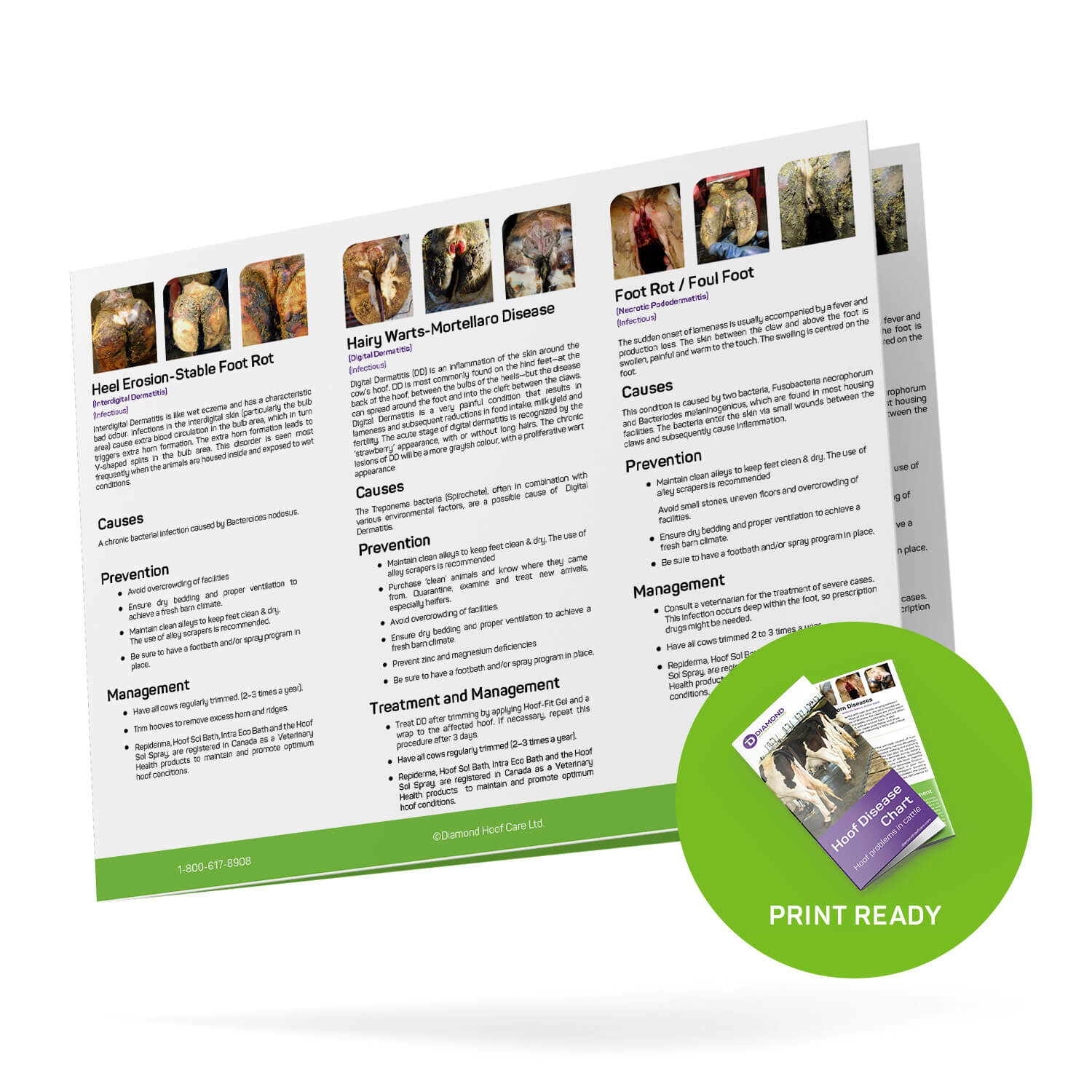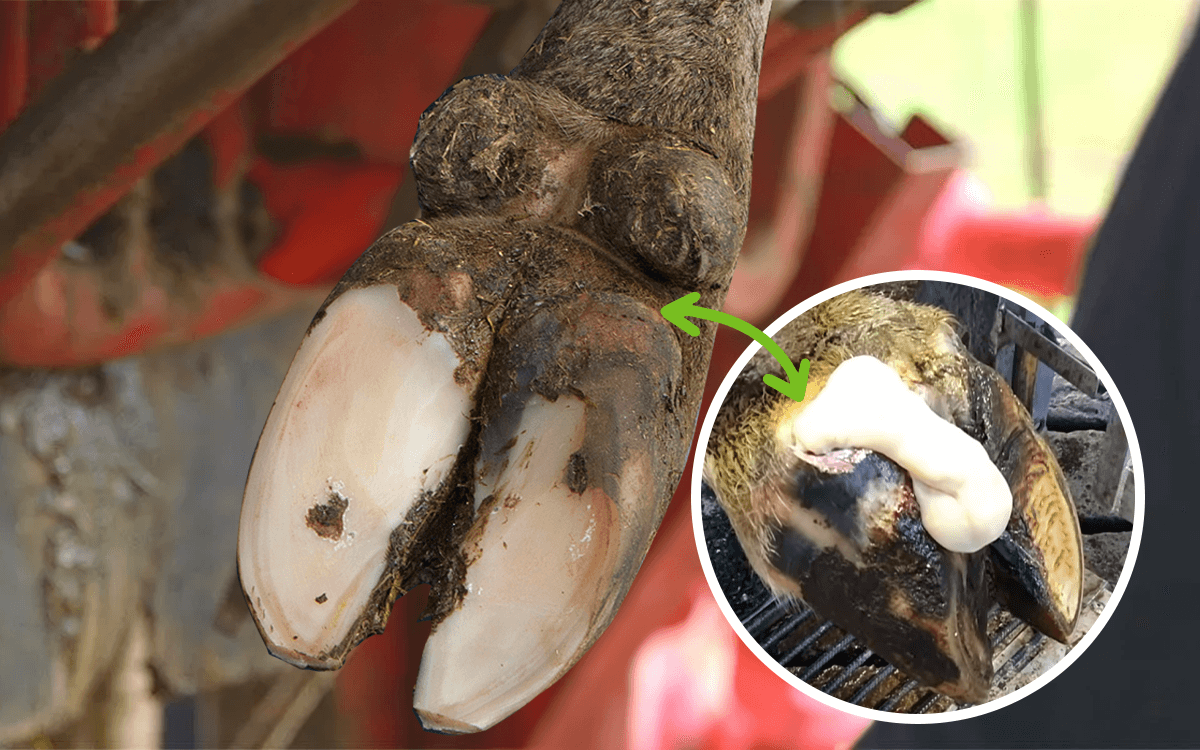Cattle are susceptible to various injuries and health conditions. If you notice one of your cows is having difficulty standing or walking, it may be hard to determine why. One possible cause is an abscess or an infected sole ulcer in its hoof. Why does this happen?
Cows get abscesses in their hooves if a hoof gets punctured by an object on the ground, a claw is bruised, or a minor hoof problem is not addressed on time. Cows are more susceptible to hoof problems if their hooves aren’t well maintained or they spend an extended period of time in dirty conditions.
In this article, I’ll answer the most common questions about the reasons cows develop abscesses, the symptoms of this infection, and its treatment. Keep reading if you’re ready to restore your cows’ hooves to optimal condition.
What Causes Cows To Get Abscesses?
![[B213]-This-is-Why-Cows-Get-Abscesses-in-Their-Hooves1 The benefits of vitamins and minerals are not restricted to humans. When it comes to cattle, these micronutrients are essential for:<br />](http://cdn-5d2e57e3f911c80ef4a235f4.closte.com/wp-content/uploads/2022/12/B213-This-is-Why-Cows-Get-Abscesses-in-Their-Hooves1.png)
Beef cows get abscesses in their hooves because the environment is rough or has too much moisture and their hooves get penetrated by some object on the ground. Bacteria can then get into the damaged sole and cause an infection. If your cows are in a swampy or muddy pasture, they’re consistently exposed to humidity, which renders their hooves soft and more vulnerable to damage. Another cause of abscesses is bruising due to rocky terrain or hard, frozen ground.
In lactating dairy cows, we often see abscesses developing after an undetected or untreated sole ulcer or a white line defect. As the claw degenerates, the fragmented part of it starts to build up, which leads to an abscess.
Just as with abscesses in horses, an infection in a cow’s hoof begins as a pocket of pus and grows into a much larger infection, causing acute pain and pressure within the foot. The pain can be so excruciating that the cow can’t walk. This inability to move around can cause the dairy cow to stop producing milk and lose significant weight within a short period of time.
If the hoof is soft, it can be punctured or penetrated more easily. Even a slight misstep on a small stone can cause a crack or a tiny hole in the hoof, opening it up to various diseases and bugs. Once bacteria start to proliferate, the result is an infected, painful pocket of pus.
As with humans, it is dangerous for cows to have an open wound. Any bacteria or bug can make its way into the hoof through a puncture, causing pus buildup.
Symptoms of Abscesses
![[B213]-This-is-Why-Cows-Get-Abscesses-in-Their-Hooves2 Gait scoring for your herd is a must-do at all times. Early detection of lame cows is the starting point for better success. Therefore, you must take note of abscesses as soon as possible to restore the animal to health. Many symptoms of any hoof problem are the obvious, but here are some signs that your cow has an abscess:<br />](http://cdn-5d2e57e3f911c80ef4a235f4.closte.com/wp-content/uploads/2022/12/B213-This-is-Why-Cows-Get-Abscesses-in-Their-Hooves2.png)
Gait scoring for your herd is a must-do at all times. The early detection of lame cows is a prerequisite for success. Therefore, you must take note of abscesses as soon as possible to restore the animals to health. Many symptoms of a hoof problem are obvious. Here are some signs that your cow has an abscess:
If you notice these signs, you should take immediate action to address the issue.
How Do You Treat Cow Abscesses?
If you catch an abscess early enough, you can treat it without having the animal endure too much suffering. You should seek the help of a professional if you feel the situation is extremely severe.
To treat an abscess, move the animal to a secure place, for example, a hoof trimming chute.
In most cases, simply allowing the pus to drain and blocking the healthy claw may be enough to resolve the issue. However, in more severe situations and after consultation with your veterinarian and a professional hoof trimmer, you’ll need to administer some antibiotics and non-steroidal anti-inflammatory drugs.
At all times, the suffering animals need a soft and comfortable pen close to water and feed. Regular follow-ups on the healing process are necessary to ensure getting the cows back into the herd as soon as possible.
Oftentimes, the diagnosis of a swollen foot is confusing. I have created an easily downloadable hoof disease chart which contains the common hoof disease in cattle. This reference sheet can assist you with the diagnosis of hoof problems.
How To Prevent Hoof Abscesses
You’ll save yourself and your cows a lot of hassle and pain if you prevent hoof abscesses altogether. Prevention isn’t always easy, but there are some steps you can take to keep this condition at bay. Here are my recommendations:
There’s no way to guarantee that your cows won’t get abscesses, but if you follow these tips, you can reduce the likelihood of this happening.

Hoof Disease Reference Chart
Final Thoughts
Abscesses are caused by the hoof getting overly soft due to constant exposure to moisture, which makes it easier for punctures or cracking to occur. Abscesses can also form as a result of bruising or out-of-control sole ulcers. To prevent this issue, you should try to keep your cattle’s environment as clean and as dry as possible. The treatment involves paring the hoof, blocking the healthy claw, and allowing the abscess to drain. In severe cases, you may need to administer antibiotics.




